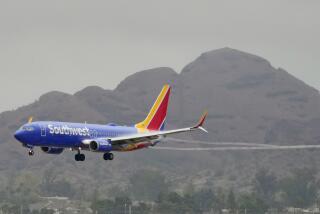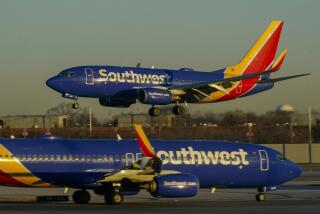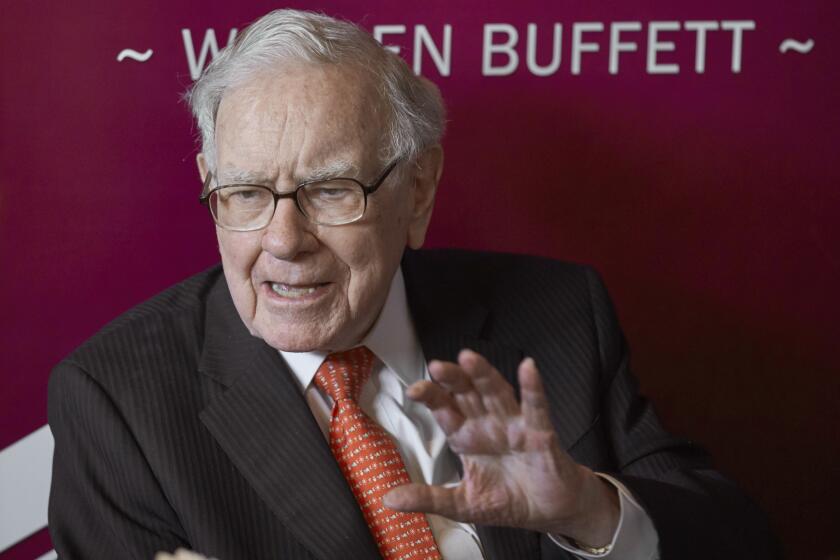With airline seats shrinking, some passengers would pay for wider seats
- Share via
Two trends that are headed in the opposite directions are likely to make flying in the economy section of a commercial plane a bit more uncomfortable in the future.
Airlines are shrinking passenger space to increase profitability while U.S. passengers are getting bigger, as is evident by rising obesity rates.
One of the world’s largest aircraft makers, Boeing Co., announced several upgrades last week to its long-range 777 jet, including changes that will allow airlines to squeeze in 14 extra seats. Other changes call for a lavatory that is 8 inches narrower than those in the previous 777’s interior design.
Meanwhile, the European Aviation Safety Agency released regulations recently that pave the way for airlines to fit the short- to medium-range A320 jets with 195 seats, instead of a maximum of 180.
Hawaiian Airlines became the latest carrier to install new “slim line” seats in 18 of its Boeing jets, allowing an extra row of five seats per plane.
With airlines squeezing seating space, a new survey found that most fliers are willing to pay extra for seats with more hip room. But most passengers won’t pay much.
The survey of more than 8,300 fliers by the fare-monitoring site Airfarewatchdog.com found that 59% would pay up to $20 for a wider seat but only 9% of passengers would pay more than $20.
“Twenty bucks isn’t enough to make it worthwhile for the airline to take out a seat and make the remaining two into a row wider,” said George Hobica, president of the site. “So perhaps people just like to complain?”
For those fliers willing to pay more than $20, Hobica suggests airlines consider a new seat class: “economy-wide seats.”
To read more about travel, tourism and the airline industry, follow me on Twitter at @hugomartin.
More to Read
Inside the business of entertainment
The Wide Shot brings you news, analysis and insights on everything from streaming wars to production — and what it all means for the future.
You may occasionally receive promotional content from the Los Angeles Times.











